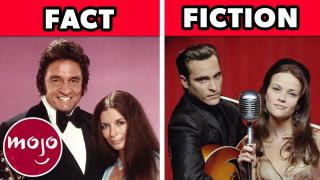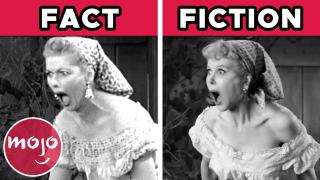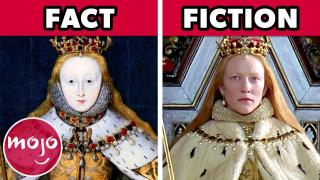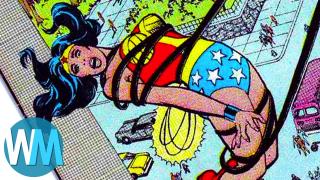Top 10 Things Little Women (2019) Did Right & Wrong

This timeless story has been told again and again, but this version gives it a modern spin. Welcome to MsMojo and today we're counting down our picks for the Top 10 Things Little Women Did Right/Wrong.
For this list, we’re looking at all the things we loved about Greta Gerwig’s adaptation and the things we wish she had done differently.
#10: The Achronological Narrative
RIGHT
Top 10 Things Walk the Line Got Factually Right & Wrong
The most notable thing that Greta Gerwig did to set her adaptation apart from the ones that came before it was employing an achronological narrative style in her retelling. The book “Little Women” was actually published in two parts, with the second taking place three years after the first. The film opens in this later timeline, so we get to see the March sisters as adults before we ever see them as children. Throughout the film, we go back and forth to the girls when they’re all young and living at their family home, and to the later part of the narrative when they’re mostly grown. To differentiate the two time periods, different lighting is used, in warm yellow tones for the earlier scenes and cool blue tones for the later ones.
#9: Beth's Arc
WRONG
Considering the book came out 150 years ago, we don’t think we’re spoiling anything when we say that Beth dies. Beth is always portrayed as the almost saintly “good one” of the March family, but in the book our knowledge of her illness and eventual death is doled out slowly with plenty of hope that she could get better. But Gerwig’s version of the story opens with news that Beth is gravely ill, with Jo rushing home from New York to be with her. Because of this, the audience gets a sense that she is doomed from the very start, and it makes it more difficult to connect with her as a character since her primary characteristic is “going to die”.
#8: The Casting
RIGHT
Top 10 Unrealistic Things That Always Happen To Women In Movies
Let’s just first say that Timothée Chalamet and Saoirse Ronan can do no wrong. Now that that’s out of the way...It’s almost impossible to imagine anyone else playing the primary role of Jo after seeing Ronan do it. Laura Dern is the perfect Marmee and utilizing Meryl Streep as the crotchety Aunt March was a stroke of genius. The way the four girls interact with one another in a rough and tumble way makes it obvious that the four actresses had great chemistry together, and the viewer could almost see the fun they were having. Two of the actresses picked up Oscar nominations for their roles, Saoirse Ronan in the category of Best Actress and Florence Pugh for Best Supporting Actress.
#7: The Marches’ Economic Situation
WRONG
Top 10 Things Movies Always Get Wrong
From very early in the movie, it’s made clear that the Marches are “poor”, and their larger economic context is shown when they donate their Christmas breakfast to a family in need, only to have their wealthy neighbors surprise them with an extravagant meal that blows them away. But to a modern viewer, the Marches don’t exactly look hard done by. They live in a large house and have what seems to be live-in help with Hannah. The film doesn’t take time to explain that the family actually came from wealth and lost it, which is why to our eyes, it looks like things aren’t actually that bad for them.
#6: Amy's Character
RIGHT
Top 10 Things Being the Ricardos Got Factually Right & Wrong
Amy is often the most reviled of the March sisters, and can even be considered something of a villain in some scenes, like when she burns Jo’s beloved book out of spite. But Gerwig gives Amy much more room to breathe, and expands her character in a way that makes her much more likable. The fact that we first meet her when she’s older and working on her art in Europe rather than as a petulant child definitely helps. This movie might just change people’s minds about the youngest March sister, and that’s quite the accomplishment. Florence Pugh’s performance definitely adds to the improvements, by making Amy seem self assured and independent.
#5: Adding Details of the Author's Life
RIGHT
Gerwig said, in an interview with Thrillist, “How do I not change what's in the book, but bring out what's already there, and how do I make a film that Louisa May Alcott would have liked?” Alcott was writing this novel in the mid-to-late 19th century and there were many limitations then on what women could do. That’s why at the end of the film (which we’ll discuss more later), we see Jo arguing with her publisher about how she is going to end her book. This is what happened to the real life author. Gerwig also pulled quotes from Alcott’s other works for one of the most affecting scenes in the movie, when Jo makes a speech about what women are capable of.
#4: Historical Context
WRONG
Top 10 Actors Who Looked Exactly Like the Historical Figures They Played
“Little Women” takes place in the American Civil War, but from Greta Gerwig’s adaptation you’d be hard pressed to glean much historical context from the narrative. While there are brief mentions of the conflict and of course the fact that the family patriarch is currently helping in the war effort and gets wounded doing so, Gerwig decided to largely stay away from the reality of it. In 2019, she could have given viewers a larger scope of what the world was like rather than focusing just on the March family. Especially considering the fact that slavery was in the process of being abolished in the years that the narrative takes place.
#3: The Feminist Additions
RIGHT
Top 10 Things Elizabeth (1998) Got Factually Right and Wrong
You might be surprised reading “Little Women” today how many feminist ideas it contains, considering how long ago it was written. And while Louisa May Alcott provided plenty of material for Gerwig to work with, the screenwriter and director made some additions to spell out to the audience the position that women were in in the late 19th century. Modern viewers might need to understand better why a woman in Amy’s position would need to marry for money, and the speech that she gives Laurie is a concise yet expansive explanation of the position that women, even wealthy ones, were in at the time.
#2: Professor Bhaer
WRONG
Professor Marston and the Wonder Women Review! Top 5 Surprising Takeaways
In the book, Professor Bhaer is described as "neither rich nor great, young nor handsome." He’s much older than Jo, and is German. Gerwig acknowledged her awareness of that description and her want to change it, saying, “This is the movies. I get to do what I want”. In her film, Professor Bhaer is played by the undeniably handsome French actor Louis Garrel. While we can see the thought behind making Jo’s alternate love interest more appealing, it does somewhat lessen the impact of Jo falling in love with someone who, by all standards, is not a good match for her. In the book, her feelings show the reader that this is what she was looking for all along, despite appearances.
#1: The Ending
RIGHT
Top 10 Disney Movies That Had the Wrong Ending
The most marked change that Greta Gerwig makes to the story is in the ending. In the book, Jo becomes engaged to Professor Bhaer and everyone lives happily ever after. We get to see the March family a few years on, at the school that Jo opens. But in the movie, Gerwig shows Jo debating with her editor whether her lead character should marry or not, and intersperses this discussion with the “happy ending” that readers were familiar with. The reality is, Louisa May Alcott did not marry herself, and never wanted Jo to either. This makes viewers question what is real and what is not, and adds a contemplative complexity to the narrative.









